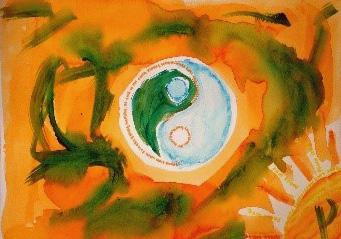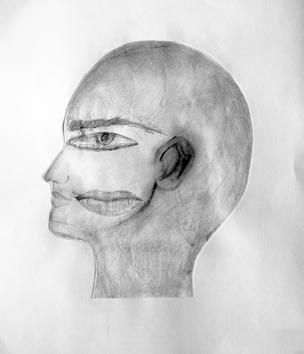
8 minute read
Bird Tracks in the Sand Rabbi Zachary Silver
Bird Tracks in the Sand
Rabbi Zachary Silver
Rabbi Silver wrote this message to the school community on May 4.
Where were you during the last day before quarantine? Who were the people at your last Shabbat dinner? What were some of the conversations you had while there?
Over the past few weeks, I’ve heard variations of these questions being asked among friends.
The image that most comes to my mind is from the Friday in March when students and faculty returned to school to pick up the books that we would all need for remote learning. People headed to their lockers and their offices. And then they just ended up staying at school. Some camped out in the senior hallway, others on the third floor near the freshmen lockers. There was a senior who asked her teacher, “Is it ok if I give you a hug?” Nobody wanted to leave.
As we enter the eighth week in quarantine, I am reminded of a poem by Israeli poet laureate Yehuda Amichai: עקבות רגלי ציפורים בחול אשר על שפת הים כמו כתב–יד שמשהו רשם, לזכור דברים, שמות ,מספרים, ומקומות עקבות ציפורים בחול בלילה נשארות גם ביום ,אבל לא ראיתי את הציפור שהטביעה אותן כך האלהים
Bird tracks in the sand by the shore of the sea. Like handwriting that someone left, to remember Words, names, numbers, and places. Bird tracks in the sand at night Remain also in the day, but I didn’t see The bird that left them there. That’s the way it is with God.
The eighth week in quarantine is tougher than the first and second. We are the Israelites wandering in the desert and it is not clear when we will reach the Promised Land. Several weeks ago, there was a new creative spirit about creating routines; now, we are in the midst of them, and we have new uncertainty that has compounded over time. See Silver, next page
And yet I’ve also become more attuned to the bird tracks in the sand, both from before quarantine and also during it.
I found last week’s programming for Yom HaZikaron and Yom HaAtzmaut to be particularly moving. We all are searching to be a part of something larger than ourselves and during last week’s holy days on the Jewish calendar, this meant honoring and celebrating our connection to the Jewish people and also to our country, Medinat Yisrael.

Our alumni, Matthew Silverman (’07), Ceren Maier (’13), Shelly Dekalo (’13), and Isaac Margulies (’18) reflected on the meaning of these sacred days in the Jewish calendar, why they made aliyah, and joined the IDF, and what they find most meaningful about living in Israel. Our alumni spoke with rawness and vulnerability, giving a glimpse into their lives, how they made their decisions that have led them to this point. They gave our current students a very real glimpse into their lives. Our community stretches well beyond the walls of our school and also beyond any particular generation of students.
Rabbi Louis Jacobs, who our seniors read in Modern Jewish Thought, defines faith as trust, and in doing so, differentiates between the central ideas of “belief in” and “belief that.” The latter, “belief that,” is a logical statement, one based carefully on trial and error. For example, one believes in something or someone, because of something that they have done to them, or for them. And if they don’t succeed with a specific action, they won’t merit the belief.
In, turn, Jacobs explains that “belief in” is a statement of the moral will; it is conditioned because of trust.
As Jacobs states, “The man who believes in his friend (or in himself) does so not much because he has weighed dispassionately all the evidence for trustworthiness but because it seems right to him to place his trust in that which is worthy of his trust as he sees it. Moreover, the very attitude of trust in one’s friend may itself summon forth a response on the part of the friend and so be responsible for the vindication of trust” (Jacobs, Faith).
Jacobs elaborates that each time the word “emunah” appears in the Bible, it should be translated as “Belief in,” as trust or trustworthiness, of manifesting a relationship, either between people, or between an individual and God. With trust, there is often doubt. “Belief in,” faith, is strong enough to handle this. Indeed, all of us know that the truest test for any meaningful relationship is that it has withstood stress. We are certainly experiencing this now.
As we consider the loss that each of us is experiencing, I find this understanding of faith to be reassuring. Our faith in our school and in each other acknowledges the pain that is very real in our lives. In the midst of our time in the metaphorical desert, we have marked the loss and pain of missing some of our signature in-person events at the end of the year, including the Shabbaton, Prom and Graduation. Students are noting even more the loss of interacting with their peers and teachers, the everyday norms of high school life.
Yet the leadership of our senior class, in particular, has shined a light for us all. Over these two months, they continually seek ways to bring the school community together virtually. They are also searching for ways for their class to stretch their high school experience so that they can celebrate both virtually and in person when it is safe, hopefully during the summer.
Our faith in our school community echoes the faith of the Jewish people, one built on trust, on covenantal relationships, on searching for ultimate meaning.
These are the bird tracks in the sand that I’ve seen over the past two months. And the ones that I’ll continue to be mindful of moving forward.
Cady then continues, saying “Now I’m awake, I’ll tell you what I see”. David Brooks talks about the necessity to forget about the external aspects of life and think more about our inner character, which, I believe, will lead us to chesed. This is exactly what Cady does, as she forgets about the non important things, and begins to acknowledge everyone’s unique and special abilities. She apologizes to the people she has wronged and hopes that her actions influence others to do the same.
Being here in high school, everyone knows what it is like to feel as if they are not being heard. As if they don’t feel a connection with the people who walk past them every single day. However, these discussions of chesed lay out a clear way for all of us to take one step higher and see the light within every person. Just like Cady, every single one of us can reach our fullest potential by looking past the outer layer of someone, and finding what truly makes that person human. What truly makes that person someone you can sit down and have a meaningful conversation with. It is so easy, and yet we tend to complicate it so much. Look at the people in front of you, next to you and behind you, and understand that everyone was created in the image of God just like yourself.
Everyone holds within them a healthy, beating heart that was crafted and blessed by the same entity as yours was. Find the chesed in your life, because believe it or not, your acts of chesed can save someone from getting hit by a bus. Well, that’s a little extreme, but at least a metaphorical bus. Your act of chesed can save people from getting into dangerous situations, and ultimately it can literally save someone’s life. Bus or no bus.
Lava, from page 15 illustrated in what He said to Job. The evidence for evil being real is that human beings have free will, and the Professor Byron Sherwin exability to choose between bepressed three fundamental ing good, being evil, or anytruths that we would like to Professor Byron Sherwin expressed thing in between. I cannot believe about God: 1. God is three fundamental truths that we would call God good or benevolent, good and benevolent; 2. God is omnipotent, meaning he like to believe about God: because He has given us free will, and He cannot enforce has unlimited power; 3. Evil is real. 1. God is good and benevolent good and evil, for that would be taking away our choice. 2. God is omnipotent (all powerful) God must let human beings It is impossible for us to be3. Evil is real. make their own choices, for lieve all three of these truths these choices are a product of at the same time and, as such, everyone is forced to It is impossible for us to believe all three how human beings are prod ucts of His image. choose between two of these. of these truths at the same time and, While it is possible to alter as such, everyone is forced to choose I hope that my own thoughts the meaning of one of these truths in order to reconcile all three, only two of them between two of these. While it is possible to alter the meaning of one on these questions help you better articulate your own answers to these questions. can be completely true. of these truths in order to reconcile I know that these questions all three, only two of them can be are rather complex ones to In understanding what I had written about God, I have completely true. answer, and I am in no way saying that my own answers come to the conclusion that are correct. As I hopefully go God is omnipotent and that evil is real. The omnipooff to college this year, perhaps my thoughts on these tence of God is evidenced by His creation of the world questions will change, but these are the conclusions I around us, and how He acts to keep the world moving, as have come to in my four years of study.








